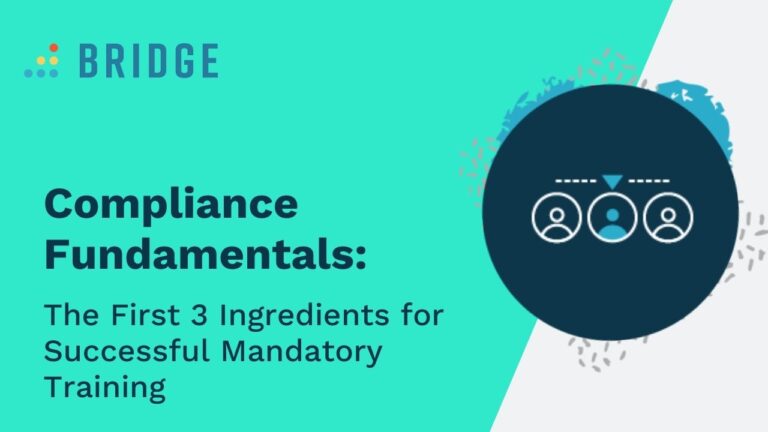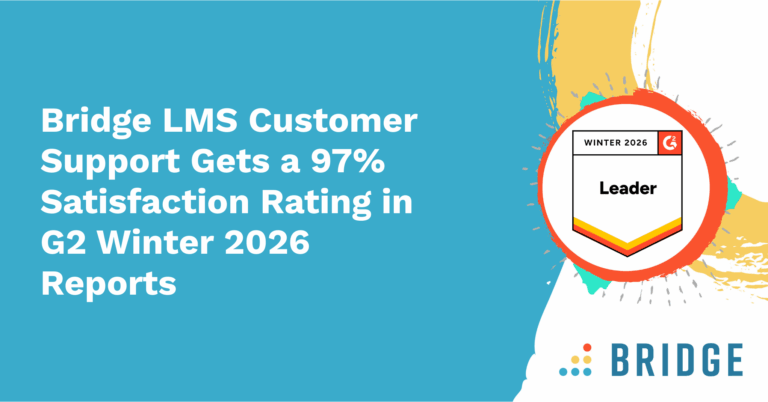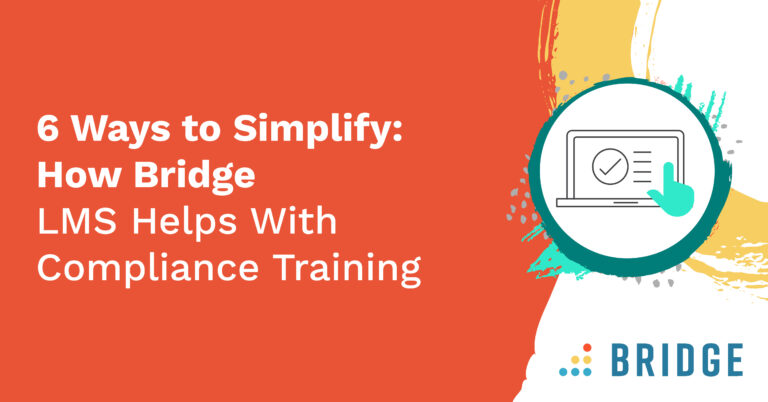For all organizations, compliance training means getting employees up to speed on the rules, regulations, laws, and policies that impact their jobs, and often involves using an LMS to maximize the effectiveness of their programs.
Unfortunately, for plenty of those organizations, compliance training also means a real hassle! Achieving full compliance can be a costly and drawn-out process. According to a 2022 Thomson Reuters survey, 62% of compliance practitioners expected to see tighter compliance budgets over the next 12 months: a 10% increase on the previous year.
That’s why effective compliance training is about mitigating these issues by getting your people up to speed on their regulatory requirements without having to grapple with complex, time-consuming software. Not only will your people perform better when they understand what’s expected of them, but there are some hefty incentives for getting compliance right.
Why Do We Need Compliance Training?
While compliance training can be a resource-intensive process, there are far bigger costs awaiting those companies that fail to stay one step ahead of the regulator.
In the world of finance, for example, non-compliance with regulatory issues like anti-money laundering and data privacy led to fines amounting to $5.4 billion worldwide in 2021.
ENHANCE YOUR COMPLIANCE COURSES | ‘5 Tips and Tools To Optimize Your Compliance Training’
The Benefits of Compliance Training
It’s not all about avoiding the fines, though! Keeping your people abreast of the latest developments in your industry can only strengthen your organization.
If your industry involves physically dangerous activities, for example, compliance training does more than keep the lawyers happy—it also helps you to maintain a safe working environment, ensuring that your workers feel protected as they carry out their duties.
Compliance training isn’t just about physical wellbeing, either. By providing your employees with effective courses on issues like inclusion and ethics, you’re demonstrating a commitment to their comfort, happiness, and mental health. According to a recent study conducted in Denmark, stronger mental wellbeing results in fewer sick days and, by extension, better rates of productivity: a substantial upside to taking compliance seriously.
FIND OUT MORE ABOUT WELLBEING | ‘8 Ways to Create & Promote Psychological Safety in the Workplace’
Why Is Annual Compliance Training Important?
No matter what your field or industry may be, the regulatory landscape is always evolving. With the arrival of new technologies, unexpected vulnerabilities, or updated practices, you need to make sure your people are keeping up with the pace of change.
On top of that, it’s worth bearing in mind that memories aren’t perfect! Your busy workers will have their hands full with the day-to-day activities that dominate their working lives, and it’s not always easy to remember a specific piece of regulatory guidance that was last seen in an ancient eLearning course several years ago.
Annual compliance training keeps the most important information fresh in the minds of your employees and keeps your organization from slipping into an attitude of complacency.
3 Compliance Topics Every Organization Needs to Consider
No matter what industry you belong to, there are some standards that everybody needs to comply with. Though it can be daunting to be confronted with such a wide range of regulatory requirements, creating the relevant courses doesn’t have to be—especially for organizations that opt for off-the-shelf compliance content.
However you choose to create your training, start by thinking about the broad topics you’ll need to address, from health and safety to cybersecurity.
1) Workplace Safety
It might be tempting to dismiss some of the hazards that form part of workplace safety training, but making sure your people know how to deal with slippery floors or exposed wiring is much more than a box-ticking exercise.
In fact, figures from the Bureau of Labor Statistics really hammer home the very real risk of workplace injury in the US, which—in 2021 alone—saw well over 2.5 million non-fatal injuries and illnesses across private industries.
2) Anti-Harassment and Discrimination
For many workers—especially women—the issues caused by harassment and discrimination can’t be ignored. According to a 2022 study from Randstad, 72% of women have experienced some form of inappropriate behavior from their male counterparts, while 67% experienced gender discrimination. In the face of these statistics, anti-harassment training isn’t just a legal imperative—it’s a moral one.
3) Cybersecurity
In a digital world populated by increasingly sophisticated threats, no organization should need persuading of the value and peace of mind that come hand-in-hand with cyber-related compliance. Even when you put aside possible regulatory fines or the risk of financial loss, the benefits of robust adherence to regulatory guidelines keep on coming.
Research has consistently shown, for example, that business leaders recognize the value of cybersecurity from a reputational standpoint. They understand that the right approach to compliance can prevent malicious entities from stealing away consumer confidence alongside sensitive data.
3 Specialist Compliance Areas for High-Stakes Industries
While every industry needs to think about safety, discrimination, and cybersecurity, these aspects of compliance training will inevitably be supplemented by regulations that only apply to certain fields. For high-stakes industries like healthcare and food services, it’s important to get compliance right—as the following three examples indicate.
1) HIPAA and Healthcare
Every healthcare professional in the US is aware of the Health Insurance Portability and Accountability Act of 1996, affectionately known as HIPAA. Compliance with these national standards is essential in any setting that involves confidential patient data, and workers in this industry need rigorous training in order to understand how health information can (and can’t!) be used.
2) Finance, Fraud, and Sarbanes-Oxley Compliance
Since 2002, the Sarbanes-Oxley Act (sometimes known as Sarbox or SOX) has been a cornerstone of financial regulation for US public companies. As its full title denotes, SOX hinges on accountability, responsibility, and transparency in terms of financial reporting. It’s not just a mandatory requirement—compliance with Sarbanes-Oxley is an important way to keep investors protected against fraud.
3) HACCP
The food industry has its fair share of acronym-heavy regulations to comply with. Just look at HACCP, for example. Also known as the Hazard Analysis Critical Control Point, HACCP asks all food businesses to create a plan for any and all possible food safety hazards that may crop up in the course of their work. It goes without saying that this kind of compliance involves training to recognize and work within the confines of a smorgasbord of local food-related laws and procedures.
5 Steps to Include in Your Compliance Training Process
1) Define Your Objectives
You can’t kickstart your compliance program until you know what you’re complying with! That’s why your compliance journey needs to begin with a compliance risk assessment designed to identify any areas of concern and ensure you’re targeting your training correctly.
This assessment will allow you to establish concrete compliance training goals like risk management or reputation building. You’ll also need to select leaders who will become responsible for compliance training. These individuals will make sure everybody’s on track for their goals and develop a strategic compliance training plan that gels with your existing company culture.
The planning stage of your compliance journey is also a great time to reflect on access and anticipate your learners’ needs. Compliance training is often mandatory, so you need to make sure your people can access their training whether they’re in the office, on-site, or on the road. Investing in mobile learning infrastructure is a great way to reduce the inconvenient elements of compliance and make sure everybody completes their training.
2) Create Engaging Content
Compliance training may be mandatory, but there are more effective ways to engage reluctant learners than dire warnings about regulatory fines!
By combining your always-available LMS with advanced course authoring tools, you’ll be in a position to craft and deliver compliance training that hits the key points while leaving a memorable impression on your learners.
Your content doesn’t just need to be engaging: it also needs to work around the busy schedules of your employees. To make sure your people have the time to keep up with your strategic compliance plan, try splitting your content into bite-size modules.
3) Keep an Eye on Learner Progress
If you’re looking to keep the regulators happy, you don’t just need to deliver compliance training—you also need to prove your people have taken it on board! This isn’t just a bonus. In fact, it’s a legal imperative that all your employees stay on top of their compliance training.
That’s why you need to complement your training program with rigorous assessment records that document your employees’ understanding of their compliance responsibilities.
The other side to this coin is that your people do, in fact, need to understand their responsibilities! To make your assessment records shine, you’ll benefit from learning journeys or pathways that automatically deliver compliance courses to your people at the right time. Bridge Journeys, for example, will also provide notifications and reminders that keep your employees plugged into your learning strategy.
DISCOVER THE POWER OF LEARNING PATHWAYS | ‘Next Steps With Bridge Journeys: 3 New Features That Take Your Learners Further’
Download Our Mini Ebook To Get the Final 2 Steps for Compliance Readiness
Whether you’re onboarding newcomers or sharing the latest regulatory updates with your long-standing employees, you’ll benefit from our more extensive breakdown of all things compliance.




